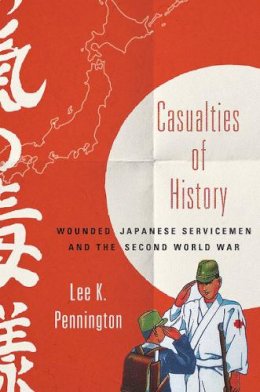
Stock image for illustration purposes only - book cover, edition or condition may vary.
Casualties of History: Wounded Japanese Servicemen and the Second World War
Lee K. Pennington
€ 48.13
FREE Delivery in Ireland
Description for Casualties of History: Wounded Japanese Servicemen and the Second World War
Hardback. Series: Studies of the Weatherhead East Asian Institute, Columbia University. Num Pages: 304 pages, 55, 10 colour illustrations, 39 black & white halftones, 6 tables. BIC Classification: 1FPJ; 3JJH; HBWQ; JFFG; JWXV; MBP. Category: (G) General (US: Trade). Dimension: 235 x 156 x 28. Weight in Grams: 599.
Thousands of wounded servicemen returned to Japan following the escalation of Japanese military aggression in China in July 1937. Tens of thousands would return home after Japan widened its war effort in 1939. In Casualties of History, Lee K. Pennington relates for the first time in English the experiences of Japanese wounded soldiers and disabled veterans of Japan's "long" Second World War (from 1937 to 1945). He maps the terrain of Japanese military medicine and social welfare practices and establishes the similarities and differences that existed between Japanese and Western physical, occupational, and spiritual rehabilitation programs for war-wounded servicemen, notably ... Read more
Show LessProduct Details
Publisher
Cornell University Press
Format
Hardback
Publication date
2015
Series
Studies of the Weatherhead East Asian Institute, Columbia University
Condition
New
Weight
597g
Number of Pages
304
Place of Publication
Ithaca, United States
ISBN
9780801452574
SKU
V9780801452574
Shipping Time
Usually ships in 7 to 11 working days
Ref
99-1
About Lee K. Pennington
Lee K. Pennington is Associate Professor of History at the United States Naval Academy.
Reviews for Casualties of History: Wounded Japanese Servicemen and the Second World War
Casualties of History is an innovative study that draws upon hitherto unexplored sources, including a variety of visual materials that are reproduced as color plates in the mid-section of the book, and adds to a richer understanding of Japanese culture during the Asia-Pacific War.
Alexander R. Bay
Medical History
After Japan surrendered to the Allies in 1945, ... Read more
Alexander R. Bay
Medical History
After Japan surrendered to the Allies in 1945, ... Read more
